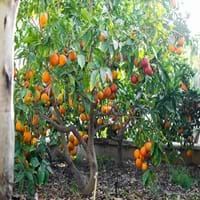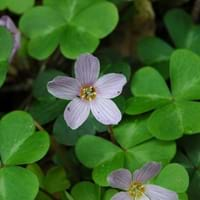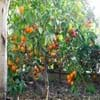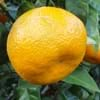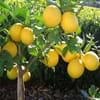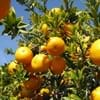Life Span
Perennial
Perennial
Origin
Southeastern Asia, China
Western United States, Canada
Types
Tarocco, Sanguinello,
Moro
not available
Habitat
Sunny Edge, Woodland Garden
Moist woods, Redwood forests
USDA Hardiness Zone
9-11
7-9
Sunset Zone
H1, H2, 8, 9, 12, 13, 14, 15, 16, 17, 18, 19, 20, 21, 22, 23, 24
4, 5, 6, 7, 8, 9, 14, 15, 16, 17, 18, 19, 20, 21, 22, 23, 24
Habit
Oval or Rounded
Spreading
Flower Color
White
White, Purple, Pink, Lavender
Flower Color Modifier
Bicolor
Bicolor
Fruit Color
Orange, Orange Red
Not Available
Leaf Color in Spring
Dark Green
Green
Leaf Color in Summer
Dark Green
Green
Leaf Color in Fall
Dark Green
Green
Leaf Color in Winter
Light Green
Light Green
Leaf Shape
Ovate
Heart-shaped
Plant Season
Spring, Summer, Fall, Winter
Spring, Summer, Fall, Winter
Sunlight
Full Sun
Partial Sun, Partial shade, Full Shade
Growth Rate
Medium
Very Fast
The pH of Soil
Acidic, Neutral
Acidic, Neutral
Soil Drainage
Well drained
Average
Bloom Time
Spring, Late Winter, Indeterminate
Early Spring, Spring, Late Spring, Early Summer, Summer, Late Summer, Early Fall, Fall
Tolerances
Drought
Drought
Where to Plant?
Ground
Container, Ground, Pot
How to Plant?
Seedlings, Semi-ripe cuttings
Divison, Seedlings
Plant Maintenance
Medium
Low
Watering Requirements
Do Not over Water, Keep the ground moist but not water-logged, Needs watering once a week
Average Water Needs, Medium
In Summer
Lots of watering
Ample Water
In Spring
Moderate
Adequately
In Winter
Average Water
Moderate
Soil pH
Acidic, Neutral
Acidic, Neutral
Soil Drainage Capacity
Well drained
Average
Sun Exposure
Full Sun
Partial Sun, Partial shade, Full Shade
Pruning
Pinch Tips, Remove branches, Remove damaged fruit, Remove damaged leaves, Remove dead branches, Remove dead leaves
Remove damaged leaves, Remove dead branches, Remove dead leaves
Fertilizers
All-Purpose Liquid Fertilizer, organic fertlizers
All-Purpose Liquid Fertilizer
Pests and Diseases
Red blotch
Red blotch
Plant Tolerance
Drought
Drought
Flower Petal Number
Single
Single
Foliage Texture
Medium
Medium
Foliage Sheen
Glossy
Matte
Attracts
Birds, Butterflies
Not Available
Allergy
Pollen
Not Available
Aesthetic Uses
Not Used For Aesthetic Purpose
Ground Cover
Beauty Benefits
Good for skin
Not Available
Environmental Uses
Air purification, Indoor Air Purification
Air purification, Provides ground cover
Medicinal Uses
Appetizer, Blood purifier, Carminative, Miscellany, Tonic
Antirheumatic, Boils, Opthalmic, Rheumatism, Sore Eyes, Swelling
Part of Plant Used
Flowers, Fruits
Flowers, Leaves
Other Uses
Used as essential oil
Culinary use, Employed in herbal medicine, Used As Food, Used for fragrance
Used As Indoor Plant
Yes
No
Used As Outdoor Plant
Yes
Yes
Garden Design
Container, Edible, Feature Plant, Fruit / Fruit Tree, Hedges, Mixed Border, Screening / Wind Break, Topiary / Bonsai / Espalier, Tropical
Groundcover, Wildflower
Botanical Name
CITRUS sinensis
OXALIS oregana
Common Name
Blood Orange, Naval Orange, Orange, Sweet Orange
Redwood Sorrel
In Hindi
Blood Orange Tree
Redwood Sorrel
In German
Blut- Orange Tree
Redwood Sorrel
In French
Sang Orange Tree
Redwood Sorrel
In Spanish
Árbol de la naranja de sangre
Redwood alazán
In Greek
Blood Orange Tree
Redwood Sorrel
In Portuguese
Orange Tree sangue
Redwood Sorrel
In Polish
Krew Orange Tree
Redwood szczaw
In Latin
Sanguinem Aliquam ligno
Rumex Redwood
Phylum
Magnoliophyta
Magnoliophyta
Class
Magnoliopsida
Magnoliopsida
Order
Sapindales
Geraniales
Family
Rutaceae
Oxalidaceae
Clade
Angiosperms, Eudicots, Rosids
Angiosperms, Eudicots, Rosids
Tribe
Citreae
Not Available
Subfamily
Aurantioideae
Not Available
Number of Species
Not Available
Not Available
Season and Care of Blood Orange and Redwood Sorrel
Season and care of Blood Orange and Redwood Sorrel is important to know. While considering everything about Blood Orange and Redwood Sorrel Care, growing season is an essential factor. Blood Orange season is Spring, Summer, Fall and Winter and Redwood Sorrel season is Spring, Summer, Fall and Winter. The type of soil for Blood Orange is Loam and for Redwood Sorrel is Loam while the PH of soil for Blood Orange is Acidic, Neutral and for Redwood Sorrel is Acidic, Neutral.
Blood Orange and Redwood Sorrel Physical Information
Blood Orange and Redwood Sorrel physical information is very important for comparison. Blood Orange height is 457.20 cm and width 365.76 cm whereas Redwood Sorrel height is 10.20 cm and width 30.00 cm. The color specification of Blood Orange and Redwood Sorrel are as follows:
Blood Orange flower color: White
Blood Orange leaf color: Dark Green
Redwood Sorrel flower color: White, Purple, Pink and Lavender
- Redwood Sorrel leaf color: Green
Care of Blood Orange and Redwood Sorrel
Care of Blood Orange and Redwood Sorrel include pruning, fertilizers, watering etc. Blood Orange pruning is done Pinch Tips, Remove branches, Remove damaged fruit, Remove damaged leaves, Remove dead branches and Remove dead leaves and Redwood Sorrel pruning is done Remove damaged leaves, Remove dead branches and Remove dead leaves. In summer Blood Orange needs Lots of watering and in winter, it needs Average Water. Whereas, in summer Redwood Sorrel needs Ample Water and in winter, it needs Moderate.
